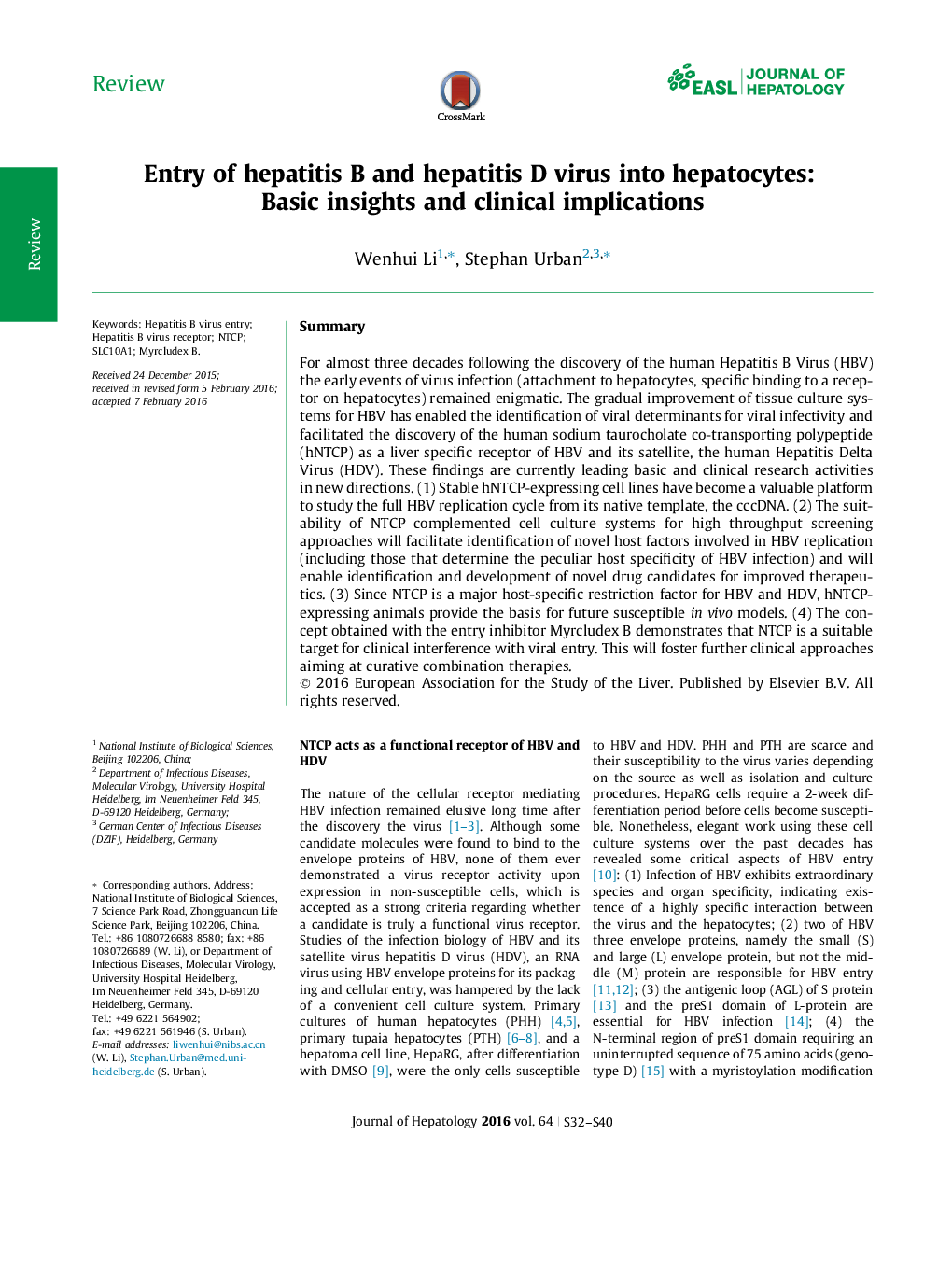| Article ID | Journal | Published Year | Pages | File Type |
|---|---|---|---|---|
| 3313538 | Journal of Hepatology | 2016 | 9 Pages |
SummaryFor almost three decades following the discovery of the human Hepatitis B Virus (HBV) the early events of virus infection (attachment to hepatocytes, specific binding to a receptor on hepatocytes) remained enigmatic. The gradual improvement of tissue culture systems for HBV has enabled the identification of viral determinants for viral infectivity and facilitated the discovery of the human sodium taurocholate co-transporting polypeptide (hNTCP) as a liver specific receptor of HBV and its satellite, the human Hepatitis Delta Virus (HDV). These findings are currently leading basic and clinical research activities in new directions. (1) Stable hNTCP-expressing cell lines have become a valuable platform to study the full HBV replication cycle from its native template, the cccDNA. (2) The suitability of NTCP complemented cell culture systems for high throughput screening approaches will facilitate identification of novel host factors involved in HBV replication (including those that determine the peculiar host specificity of HBV infection) and will enable identification and development of novel drug candidates for improved therapeutics. (3) Since NTCP is a major host-specific restriction factor for HBV and HDV, hNTCP-expressing animals provide the basis for future susceptible in vivo models. (4) The concept obtained with the entry inhibitor Myrcludex B demonstrates that NTCP is a suitable target for clinical interference with viral entry. This will foster further clinical approaches aiming at curative combination therapies.
